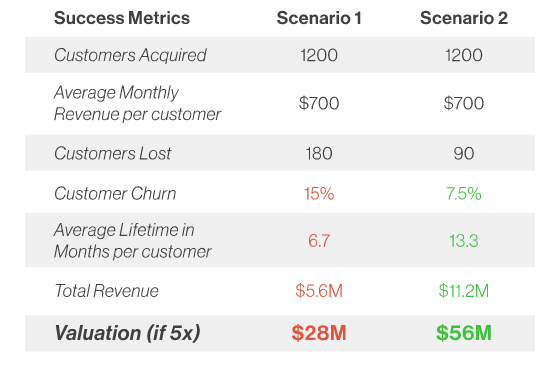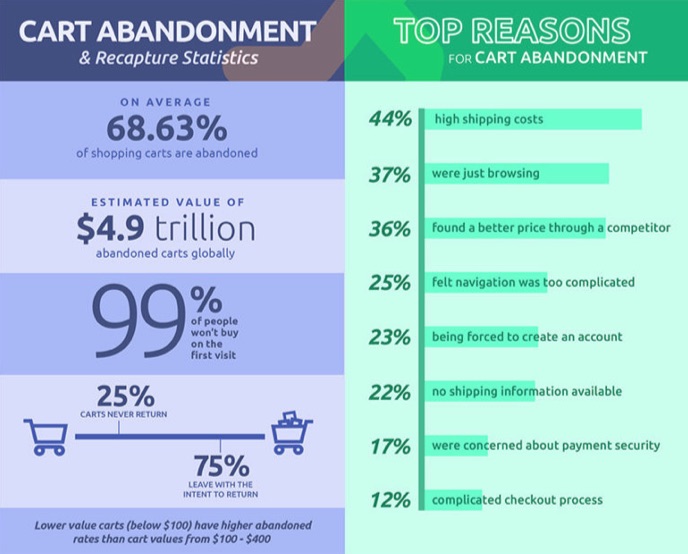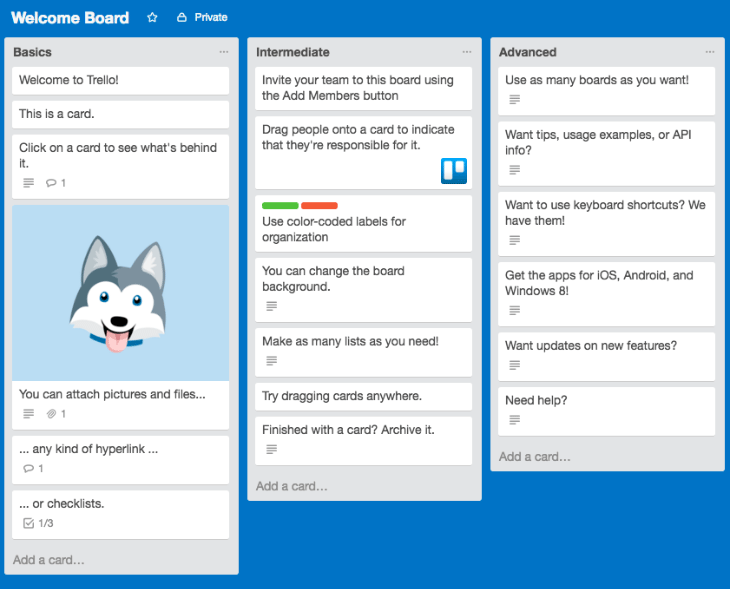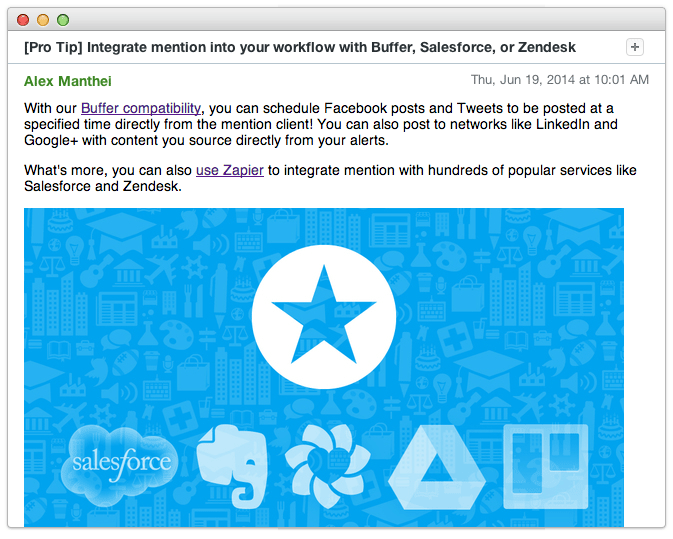Every business needs a steady stream of new leads coming in the door. New business is crucial for survival. If you’re not feeding your funnel, then you’ll limit your capacity for growth and eventually tank.
This is why a lot of businesses heavily focus on new customer acquisition. They build out sales teams with aggressive goals to generate new business and keep the growth train rolling. According to a survey from Statista, the number one challenge facing small business owners in the U.S. was attracting new customers.
Many of those businesses fail to realize that customer retention usually has more profound impacts than efforts to acquire new customers, and neglecting customer retention can lead to the untimely demise of a business.
You have to find unique ways to keep the customers you have because they are your greatest source of revenue.
The Value of Customer Retention
On average, your loyal customers are worth a great deal more than a new customer. If you keep them happy, you can expect a much higher lifetime value for your average customer. In fact, a returning customer can be worth up to 10x more than a first-time customer.
That’s because the average repeat customer could spend up to 67% more around their third year with a business compared to the first six months of their initial relationship. Over time, you develop a strong rapport with customers that come back, and satisfaction and happiness will continue to rise if you consistently nourish your connection with them.
Even if you only make small changes intended to delight your customers, you might see a massive shift in revenue as a result of increased loyalty toward your brand.
Just look at these example scenarios created by Punchline:

The image here illustrates how revenue can increase when a company takes the time to focus on customer retention. In both scenarios, the acquisition strategy remains unchanged. By slashing customer churn in half however, the company is able to almost double its total revenue.
The Most Common Causes of Churn and How to Fix Them
In order to retain customers, you first have to understand what’s driving them away. Simply put, some causes are beyond your control. However, there are other causes that you can task your team with correcting.
1. Poor Customer Service
Poor service is arguably the top reason why customers bail on businesses and never return. As many as 78% of customers have skipped out on a purchase due to a poor service experience, and 90% of customers have reportedly abandoned a business altogether due to bad customer service.
That’s a significant chunk of business walking out the door, and with just 4% of dissatisfied customers actually reporting problems, you’ll be hard-pressed to find out where you dropped the ball.

Failures in service can happen at any point with a customer, from the initial purchase phase to the follow-up phase. Customer service screw-ups can also happen on any channel where engagement takes place: social media, email, over the phone, live events, in-store interactions, etc.
How to Fix It:
- Give your customer service teams more autonomy to resolve customers’ issues, own the resolutions, and get more involved in delighting your customers
- Use customer contact info to set up abandonment, engagement, and recapture email campaigns
- Audit customer service responses and, if necessary, bolster training in empathy, patience, and positivity in communication
- Create focus groups or survey your current customers for feedback on how customer service can be improved to meet or exceed their expectations
- Find a resolution for every customer service issue that favors the customer
- Review your cart/funnel for other causes of abandonment that may prevent customers from wanting to return or make future purchases
2. Ineffective Onboarding
A simple product manufacturer isn’t likely to experience onboarding issues. Very little education is required for someone to understand what to do with a statue they purchased from ThinkGeek, or artisan clothing from a supplier.
More complex systems, like subscription-based software or services, are a different story. The onboarding period, where you assist the customer starting with initial entry to and ending in success, is critical for retaining customers. Considering the amount of work you put in to get the customer to close, it would be painful to lose them shortly thereafter.

If the onboarding process is confusing or nonexistent, then the customer might get frustrated and lost, or fail to understand the full value of what you have to offer. This is the easiest point for a customer to decide that they don’t want to continue with the investment and bail on you.
How to Fix It:
- Start with great customer service: welcome the customer via email and provide them with a dedicated rep to guide their journey
- Use onboarding tools to develop tutorials, guides, and usage cues
- Create an onboarding autoresponder that encourages interaction. Discover their goals and respond with resources/info to help them reach those goals
- Identify the success triggers of your best customers; use those as benchmarks for guiding new users to success
- Use customer feedback to uncover common friction points; adapt products, services, and information to eliminate those friction points or help customers overcome them
- See roadblocks that occur during onboarding with the Funnel Report
- Crowdsource usability testing to uncover UX issues with services like UserTesting
- Get feedback while customers are using your app or service with Wootric
- Continually provide value during the onboarding phase to help customers find that initial success, and remember to maintain engagement beyond that sticking point
3. Success Falls Off
That first success point is great if you can get the customer there through onboarding. However, your interactions and responsibilities don’t end there. You have the entire customer lifecycle moving forward, and you need to regularly check in with customers to ensure they understand how to use and benefit from your product.
If communication drops off and there’s no development in the relationship, the customer is left wondering whether the value is still there over time. If they don’t understand how to leverage your product and feel the value is diminishing, then you’re risking a big reduction in the overall lifecycle of the customer by leaving them to their own devices.

How to Fix It:
- Develop red flag metrics that can identify customers who are struggling or at risk of leaving
- Monitor customer metrics: reach out and re-engage those who either haven’t ordered yet or haven’t activated and accessed their accounts
- Talk to customers and ask them, directly or through surveys, why they’re struggling
- Segment at-risk customers and create engagement strategies specific to their struggles
- Don’t focus your marketing solely on acquisition; create high-value content that targets existing users and help them attain more success
4. Natural Events
Very few customers stick around for the full life of your business. Eventually, almost every customer will churn and there are a number of natural occurrences that lead to this. These instances often have very little to do with anything you or your team failed to do.
Natural churn can happen due to:
- Personnel changes leading to the onboarding of different products or services
- Changes in the company’s processes, which require different solutions
- Customers relocating or going out of business
- Companies outgrowing a product or service
- Budgetary changes
Although you can’t directly prevent natural occurrences from happening, you can use this information to improve retention and perhaps save some customers.
How to Fix It:
- Watch for red flag metrics that show steady declines that could lead to a service cancellation or lost customer
- Use customer exit surveys to solicit feedback
- Schedule regular outreach to monitor the changing needs of your current customers
- Send value-based emails encouraging use and activity
5. Pushing Too Hard
Your customers are going to purchase something from you for a very specific reason: they have a problem and they’re looking for a solution. Once they have a solution, they won’t need another one until they’ve identified another problem.
That means you can’t just motivate them with aggressive sales tactics or harass them with transaction-based emails to get them to purchase more.
When the majority of your interactions with a customer involve attempts at upselling with little extra value, then you can expect to lose some customers. It won’t take them long to find a competitor with a similar solution who doesn’t persistently hound them for money.
How to Fix It:
- Know your customers and their purchasing habits. This way, transactional emails and promotions will fit their behaviors better
- Make sure promotional outreach is no more than 20% of interactions; fill the other 80% with value
- Track the open and click-through rates of emails; if those numbers are falling on transaction emails, then that indicates you’re pushing too hard and losing engagement as a result
- Coach sales and account managers on providing value before making sales; build relationships to reduce churn and increase the lifetime value of customers
Conclusion
Every company experiences churn. Reducing it is not rocket science and it doesn’t require a complete overhaul of your processes or operations. The key is to first identify the source of the churn. Segment your at-risk customers and develop strategies for fixing the causes. In many cases, you’ll make small, incremental adjustments that are easy to deploy and will go a long way toward delighting customers and reducing churn.
What are some of your approaches to customer retention? How do you keep your current customers coming back for more? Share your ideas with me in the comments.
About the Author: Aaron Agius is an experienced search, content and social marketer. He has worked with some of the world’s largest and most recognized brands to build their online presence. See more from Aaron at Louder Online, their Blog, Facebook, Twitter, Google+ and LinkedIn.
from The Kissmetrics Marketing Blog https://blog.kissmetrics.com/troubleshooting-your-customer-retention-approach/

No comments:
Post a Comment